Living in SZ | Step back in time with four ancient markets
Writer: Wei Jie | Editor: Lin Qiuying | From: Shenzhen Daily | Updated: 2024-10-15
Looking for a unique experience that combines history, culture, and shopping for your weekend or holiday adventure? Dive into the fascinating world of Shenzhen’s ancient markets!
These storied hubs of commerce, dating back to the Ming (1369-1644) and Qing (1644-1911) dynasties, offer an escape from the city’s modern hustle and bustle, giving you a taste of traditional Chinese architecture, cuisine, and local crafts.
Whether you’re a history buff, a culture enthusiast, or simply in search of a new place to explore, these ancient markets have something special to offer.
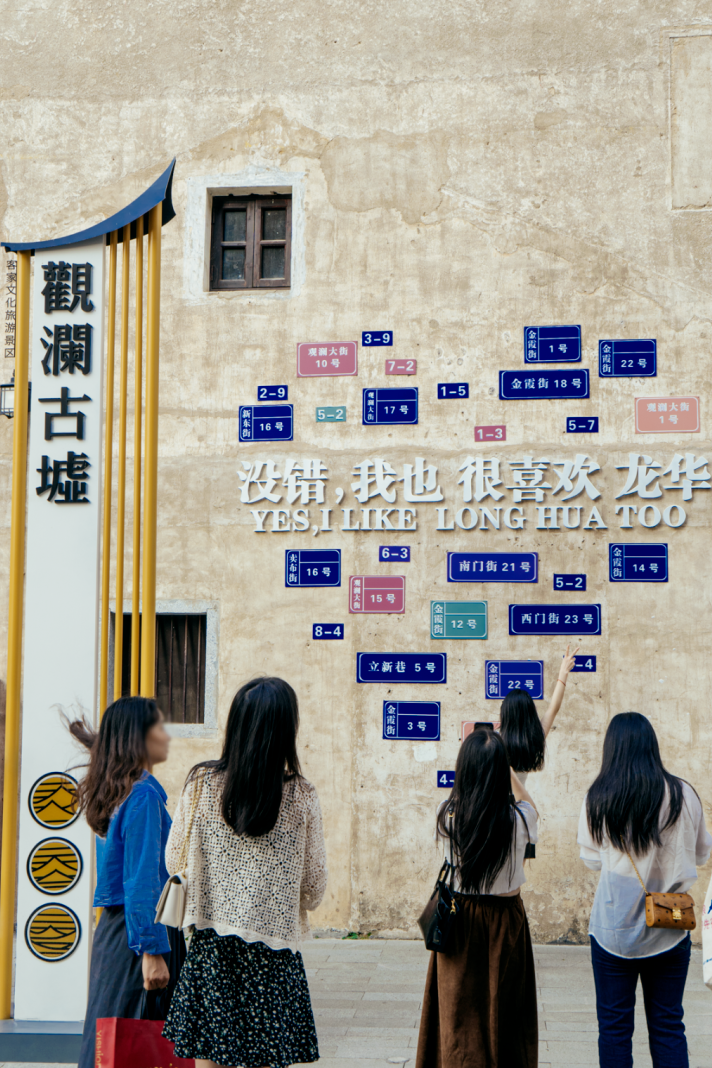
Visitors are drawn to a vibrant wall adorned with a mosaic of address plates, welcoming them at the entrance of Guanlan Ancient Market in Longhua District. Photo from official WeChat account "iShenzhen"
Markets in the old times are typically a self-sufficient commercial activity of small-scale agricultural economies, involving farmers, vendors and small craftsmen, which gradually formed fixed points and times for trading activities over time. There used to be many old markets in Shenzhen. According to official records of “Xin’an County Annals,” Xin’an County that had jurisdiction over today’s Shenzhen and Hong Kong had a total of 28 markets in 1688 under the reign of Emperor Kangxi, and the number increased to 37 in 1819 under Emperor Jiaqing’s reign.
Most of the markets in Shenzhen emerged during the Ming and Qing dynasties. By the end of the Qing Dynasty, Shenzhen’s markets reached the peak of their development — the largest scale, the most vigorous trading and the highest level of commercial activities.
However, most of the ancient markets disappeared or declined over time especially during the urban development process. Today, four major ancient markets remain known: Shenzhen Market in Luohu District, Shajing Qingping Market in Bao’an District, Shatoujiao Old Market in Yantian District, and Guanlan Old Market in Longhua District.
Shenzhen Market
A quintessential Cantonese-style market, Shenzhen Market is located in the Dongmen community of Luohu Distict, encompassing the area bordered by Gongyuan Road in the west, Dongmen Road Central in the east, Shennan East Road in the south and Shaibu Road in the north. Featuring four main entrances in each cardinal direction: east, south, west and north, it was one of the most prosperous markets among the 36 in the then Xin’an County from 1736 to 1820.
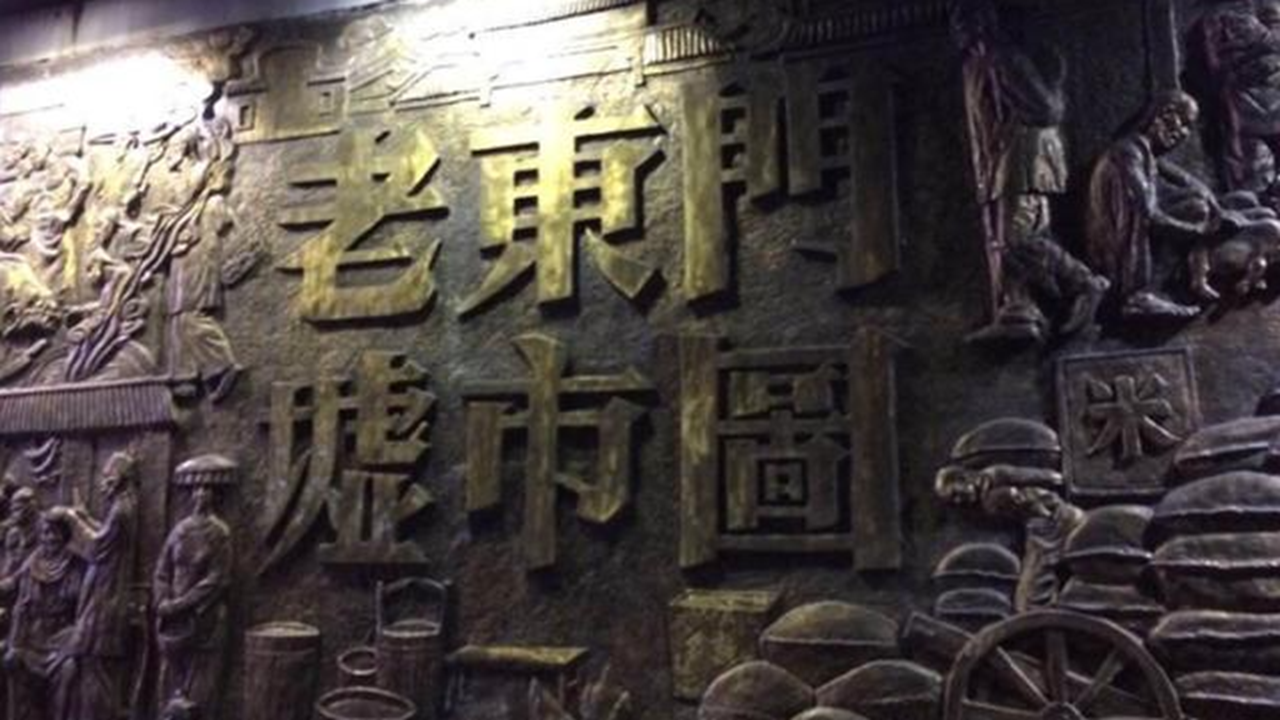 Part of a 3-meter-wide, 16.5-meter-long bronze relief depicting the bustling Shenzhen Market during the Ming and Qing dynasties, which stands at Dongmen Cultural Square, showcasing the shops and crowded streets of this once-thriving commercial hub. File photos
Part of a 3-meter-wide, 16.5-meter-long bronze relief depicting the bustling Shenzhen Market during the Ming and Qing dynasties, which stands at Dongmen Cultural Square, showcasing the shops and crowded streets of this once-thriving commercial hub. File photos
Famers, vendors and craftsmen gathered at Shenzhen Market to trade on the 2nd, 5th, 8th, 12th, 15th, 18th, 22nd, 25th and 28th days of every month in the lunar calendar, known as the “market days.” The Dongmen area, now known as Dongmen Old Street, has withstood significant changes and challenges over time, developing into one of Shenzhen’s most important commercial centers today.
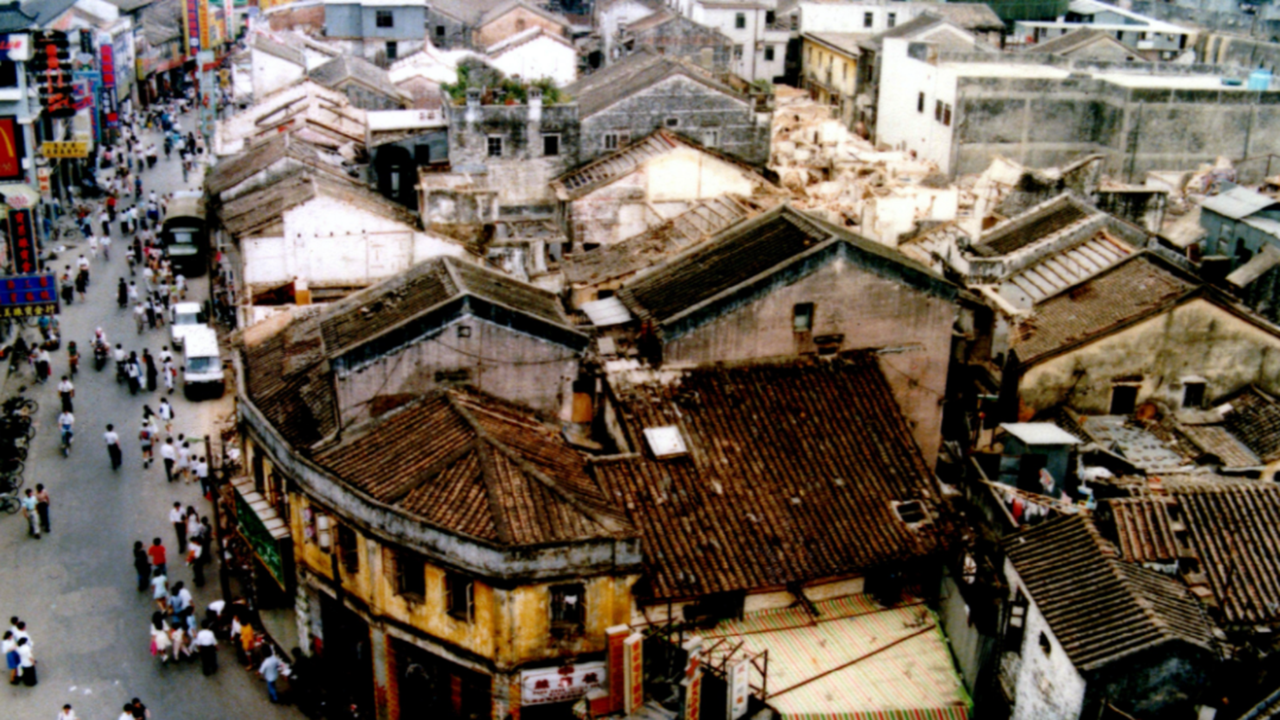
Dongmen Old Street in the 1990s.
Add: Dongmen Subdistrict, Luohu District (罗湖区东门街道)
How to get there: Metro Line 1 or 3 to Laojie Station (老街站)
Guanlan Old Market
Guanlan Old Market, situated in Guanlan Subdistrict of Longhua District, stands as the most intact and the largest among Shenzhen’s four main ancient markets, featuring an impressive array of ancient architecture.
Built in 1766, the Guanlan Old Market used to serve as a prominent commercial area, attracting large crowds and merchants from neighboring regions.
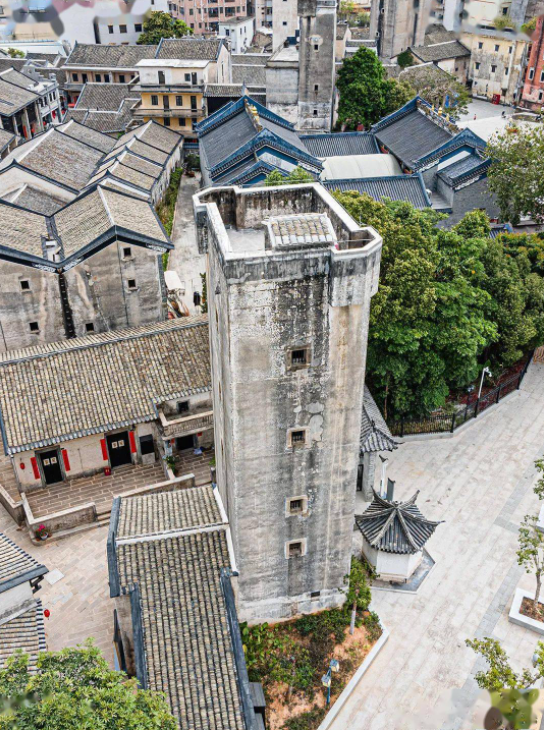
One of the Guanlan fortresses standing in Guanlan Old Market.
The ancient market is renowned for its distinctive Lingnan-style buildings, which incorporate Western classical elements. The architecture possesses immense historical and cultural value. In the market, you’ll find an arcade street lined with wooden stilt houses reflecting Hakka culture, the only of its kind in Shenzhen. The Guanlan fortresses are among the largest, and best-preserved ancient cannon towers in the city, with each tower serving as a witness to the region’s historical changes.
When it opened for business in 1938, the Lange Pavilion was the most luxurious restaurant in the Guanlan area. Affectionately nicknamed the “Red Building” for its striking red façade, the pavilion was the first structure in Guanlan to exhibit a fully Western architectural style, and quickly became a leading commercial establishment within the ancient market at that time.
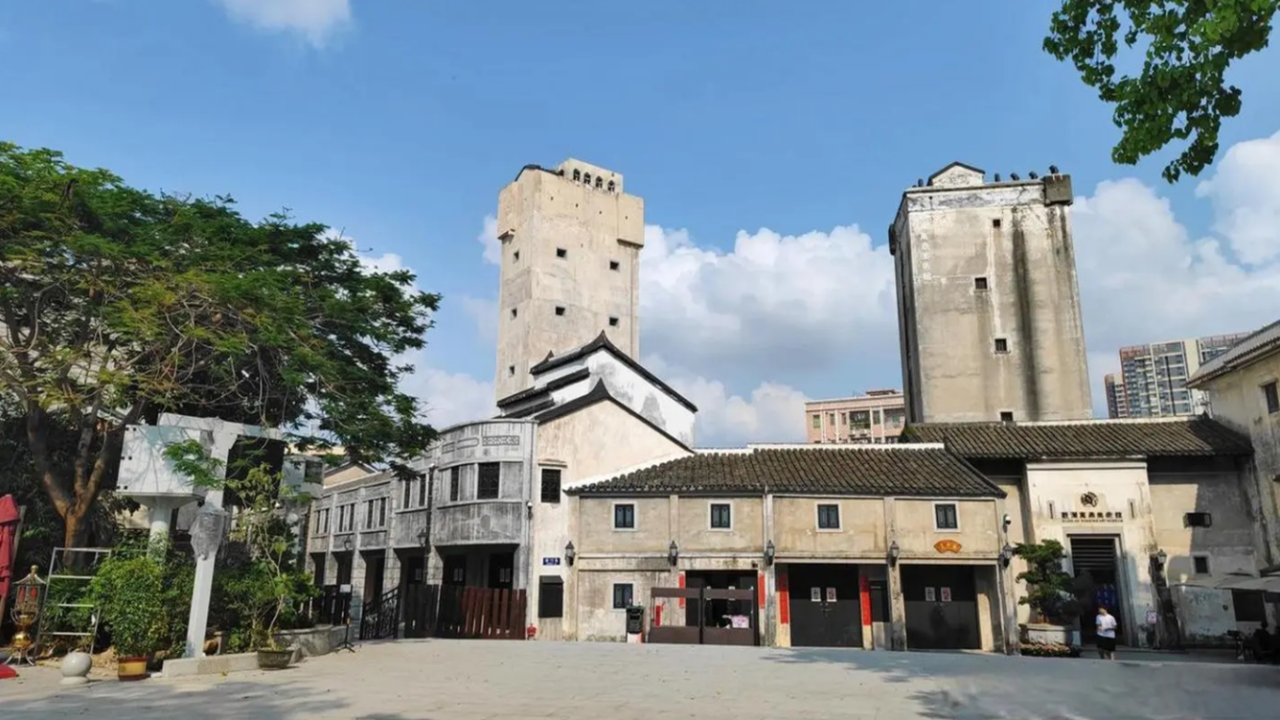 Guanlan Old Market is renowned for its distinctive Lingnan-style buildings.
Guanlan Old Market is renowned for its distinctive Lingnan-style buildings.
There is a 100-year-old banyan tree on the bank of the Guanlan River, adjacent to the Guanlan Ancient Temple. Built in 1725, the temple has remained a popular site for worship. It is said that people would come to pray at the temple before setting off on boat journeys.
Strolling along the ancient stone-paved streets in Guanlan Ancient Market, visitors will find a variety of traditional handicraft shops and specialty snack stalls nestled within the historic buildings, providing a rich taste of Shenzhen’s traditional culture.
Add: Xinlan Community, Guanlan Subdistrict, Longhua District (龙华区观澜街道新澜社区)
How to get there: Metro Line 4 to Guanlan Station (观澜站),Exit B, and walk for 10 minutes
Qingping Ancient Market
Established during the Emperor Jiaqing reign of the Qing Dynasty, Qingping Ancient Market, located in Bao’an District, is the only existing riverside ancient market in the Cantonese-speaking area in Guangdong Province that retains the Qing Dynasty architectural features. Within the Qingping market stands a variety styles of structures, including the Lingnan style, Western classical style and contemporary architecture.

A man enjoys a relaxing moment in a lane at Qingping Ancient Market.
This historical site features significant buildings such as the Qing Dynasty Yongxing Bridge, a city-level cultural heritage site in Shenzhen, the Xinqiao Granary, a district-level cultural heritage site in Bao’an, and the Guang'an Pawnshop, recognized as an immovable cultural heritage site in Bao'an District.
With a history spanning approximately 200 years, Qingping Ancient Market was once a bustling commercial hub with merchants from various places and a diverse array of shops. Qingping Ancient Market has now become an important historical and cultural education base in Shenzhen. It has also been developed into a comprehensive entertainment industry cluster that integrates film, art, leisure, and cultural tourism.
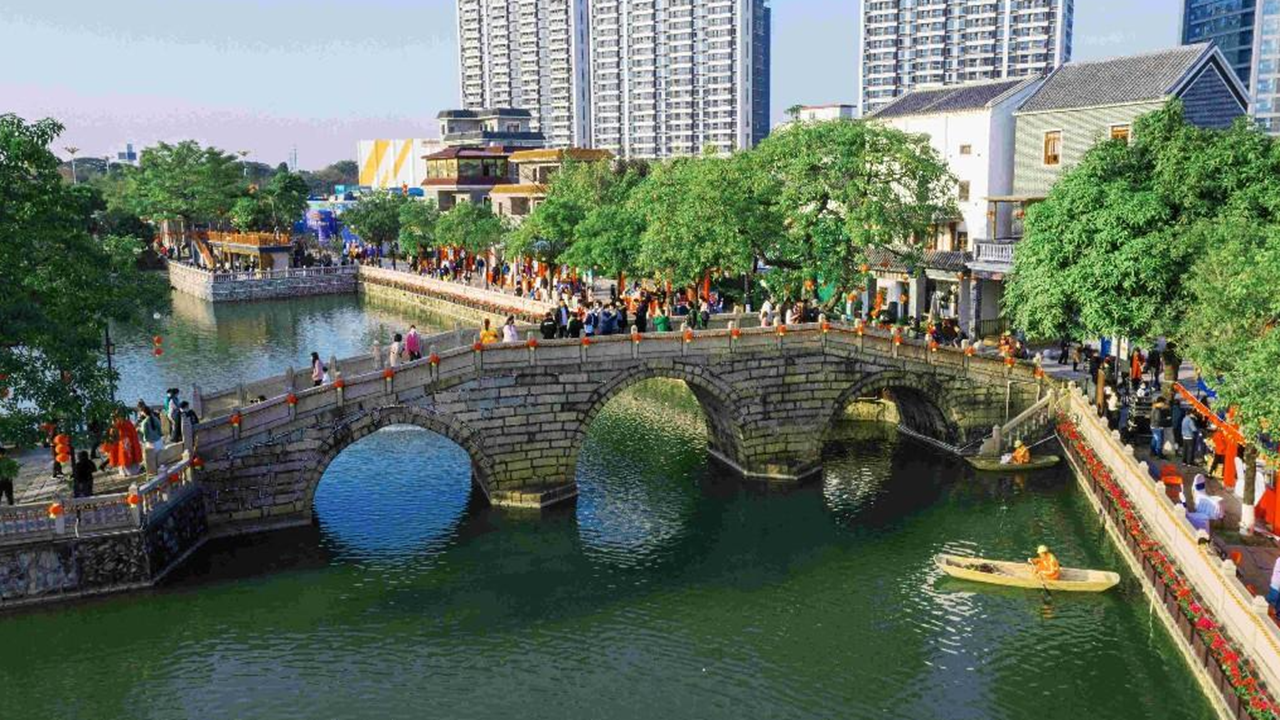
Yongxing Bridge is a city-level cultural heritage site in Shenzhen.
Built in 1785, Yongxing Bridge is the only remaining ancient three-arch stone bridge in Shenzhen.
The Guang'an Pawnshop, known locally as “Dang Lou,” is the largest existing pawnshop site in Shenzhen. The building retains its original architectural features from its initial construction.
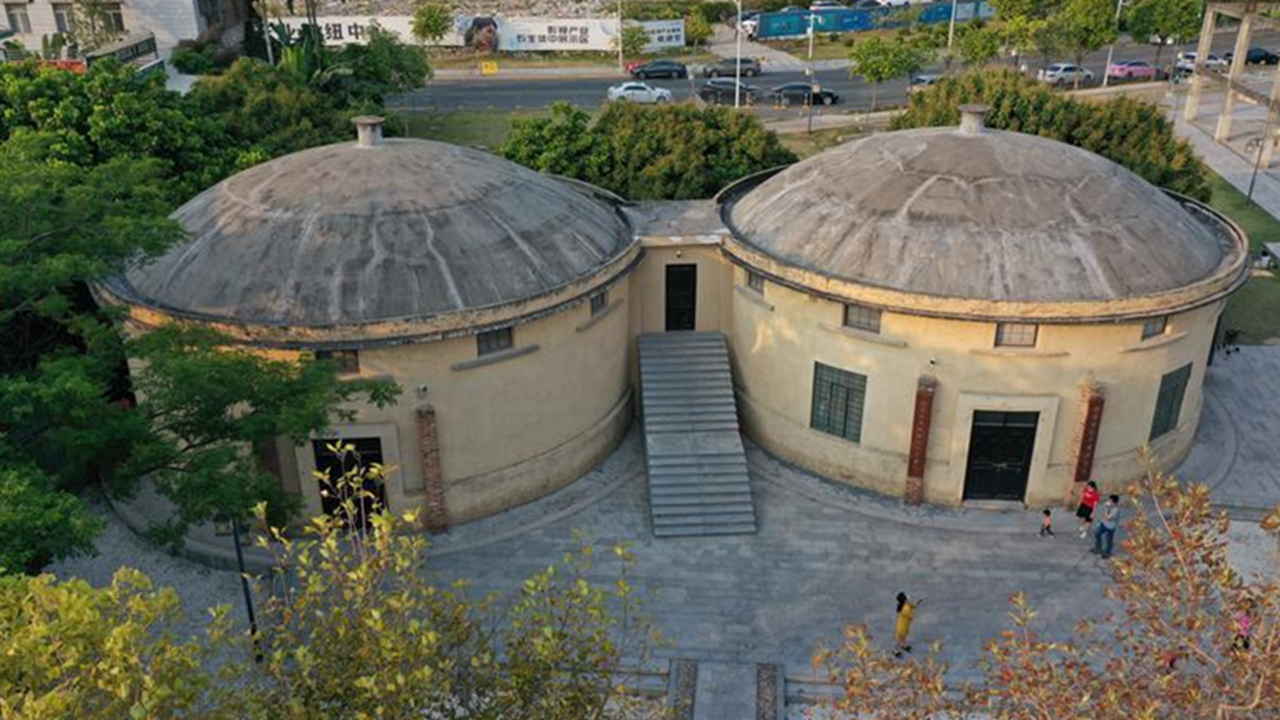
The Xinqiao Granary still stands at Qingping Ancient Market today.
The Xinqiao Granary was established in the 1950s and was one of the four major grain centers in then Bao'an County. The granary, featuring distinctive Lingnan architecture style, consists of two parallel cylindrical warehouses, built with red bricks and topped with glazed tiles.
Add: Qiaotou North Road, Xinqiao Subdistrict, Bao’an District (宝安区新桥街道桥头北路)
How to get there: Line 11 to Shajing Station (沙井站), Exit D
Shatoujiao Market
Shatoujiao Market, situated in Shatoujiao Subdistrict of Yantian District, has a rich historical background as a renowned fishing port in Shenzhen.
Emerging around 1820s, the market enjoyed a significant geographic advantage of being the intersection point of three trunk roads — one connecting Yuen Long in Hong Kong to Huizhou City, another linking Nantou in Nanshan District to Shatoujiao, and a third route from the Buji area to Hong Kong’s Kowloon. Its strategic location turned Shatoujiao Market into an important commercial hub at ancient time, serving as an essential distribution center for goods throughout the city.
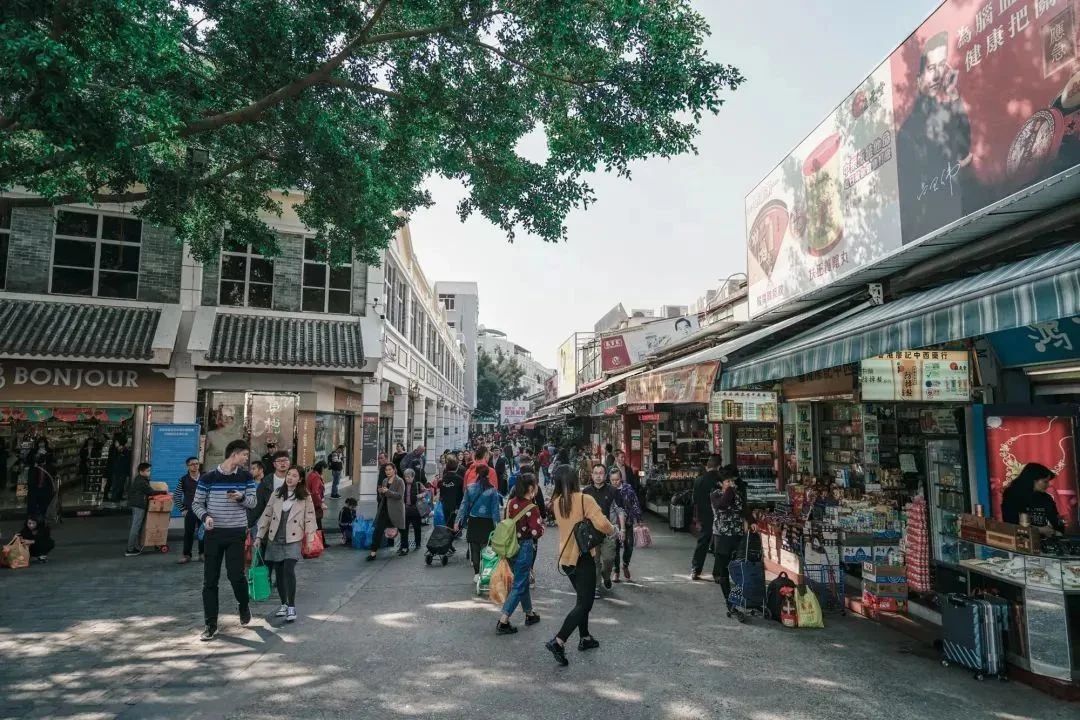
The crowded Zhongying Street in the 1990s.
Shatoujiao Market features a wealth of historically important buildings and cultural landscapes, predominantly showcasing Lingnan architecture, alongside some European and contemporary commercial buildings. Within the market, there are numerous landmarks worth exploring such as the border monument, the alarm bell, the Zhongying (Chung Ying) Street Museum, and the Zhongying Street Library.
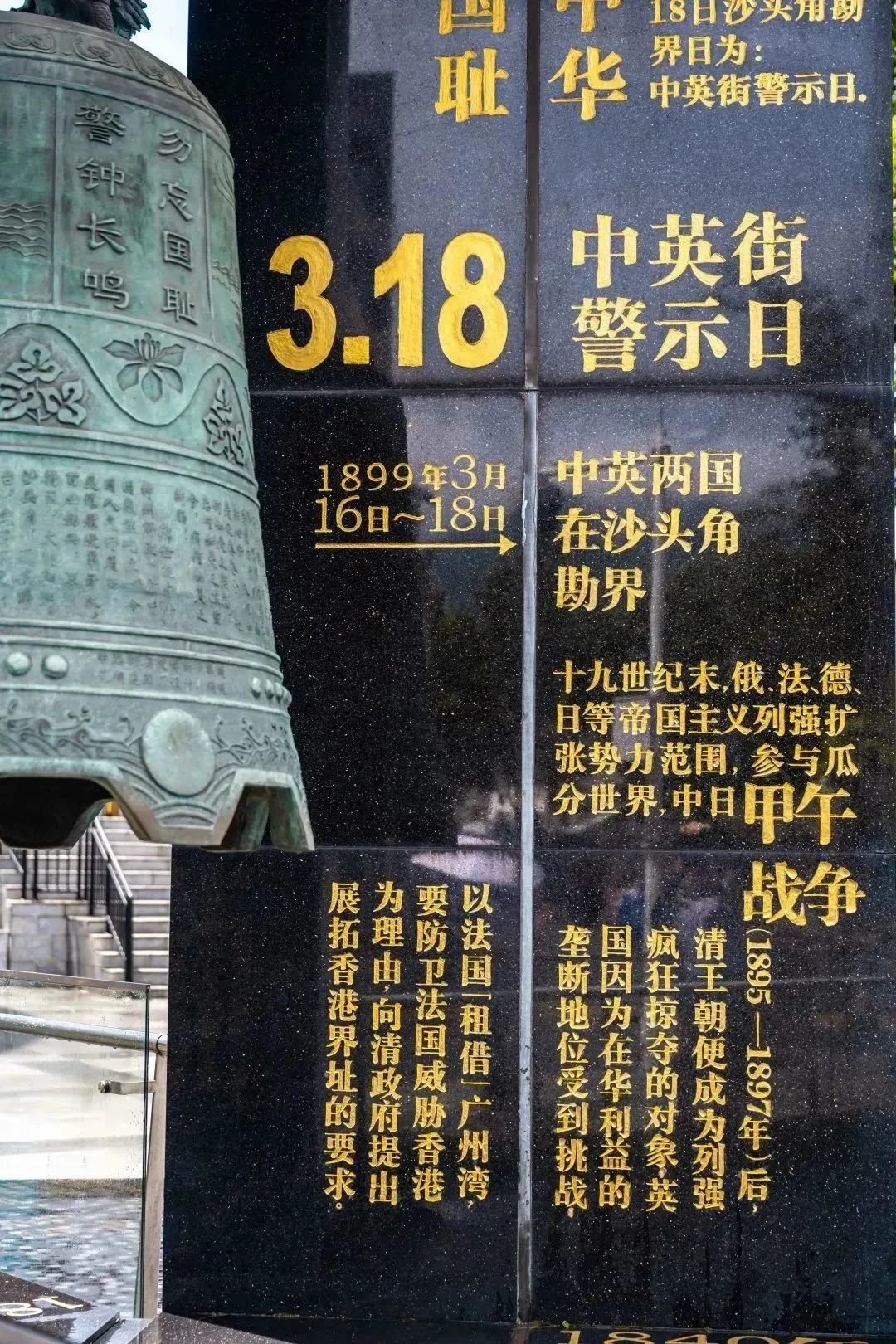
The alarm bell and border monument at the end of Zhongying Street in Shatoujiao Market.
Shatoujiao Market not only highlights the Hakka culture of Shenzhen, but also constitutes an inseparable part of the city’s historical and cultural heritage.
Add: Near Zhongying Street, Shatoujiao Subdistrict, Yantian District (盐田区沙头角街道中英街附近)
How to get there: Metro Line 8 to Shatoujiao Station (沙头角站),Exit C, then walk for about 1.2 km